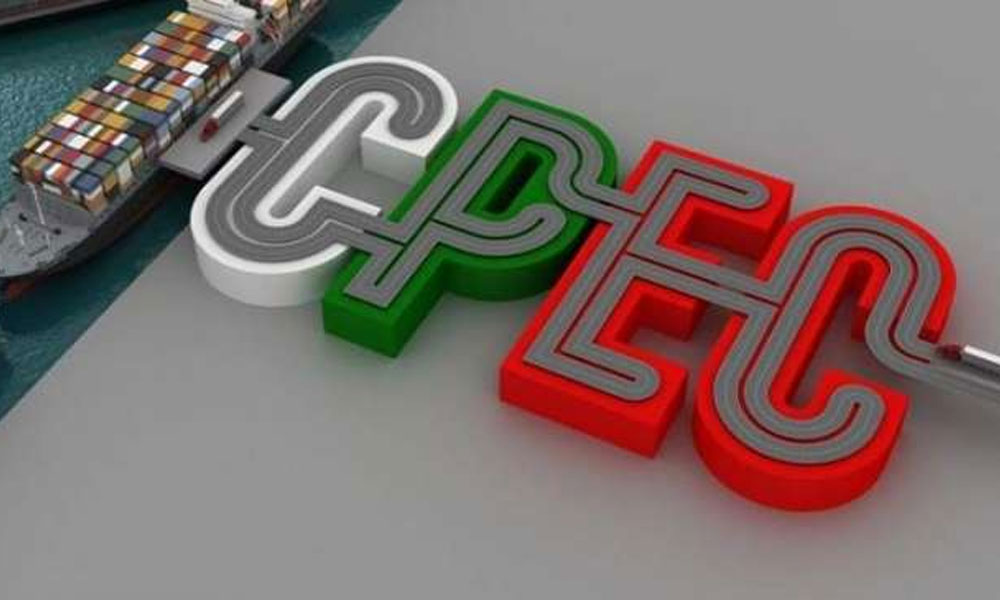News Highlight
China tacitly endorsed Pakistan’s decision to scrap the CPEC Authority amid reports of a growing rift between the all-weather friends.
Key Takeaway
- Before the decision to scrap the China-Pakistan Economic Corridor (CPEC) Authority.
- Pakistan’s Ambassador to China met China’s External Security Commissioner of the Foreign Ministry, Cheng Guoping, this month.
- While the details of the meeting were not disclosed, a Chinese Foreign Ministry press release said the two sides had an in-depth exchange of views on China-Pakistan relations.
What is the China-Pakistan Economic Corridor (CPEC)?
- The CPEC is a long route of infrastructure projects.
- It connects China’s northwest Xinjiang Uygur Autonomous Region and the Gwadar Port in the western province of Baluchistan in Pakistan.
- It was announced in 2015.
- The CPEC is a part of the Belt and Road Initiative (BRI).
- The BRI aims to reintroduce historical trade networks by creating a modern-day Silk Road that links South and Southeast Asia, the Middle East, Africa, and Europe.
The Belt and Road Initiative (BRI)
- The BRI is an ambitious project focusing on connectivity and cooperation among multiple countries across Asia, Africa, and Europe.
India’s stand on the BRI
- India has already refused to join this initiative due to the geostrategic and geopolitical angle attached to this project.
- Instead, India has started initiatives for connectivity on its own.
- The following are some of the steps taken by India.
- Project Mausam:
- The project is under the Ministry of Culture, its purpose is to re-connect and re-establish communication links between countries of the Indian Ocean and enhance their cultural values.
- Sagar Mala:
- It is a port-led development focusing on infrastructure and connectivity.
- It is to enhance the capacity of major and non-major ports and also to start their modernisation process.
- Chabahar Port:
- Chabhar’s location gives India access, besides Iran, to Afghanistan, Central Asia, and Europe, bypassing Pakistan altogether and cutting down significantly on current travel distance and time.
- The Indian Ocean Rim Association (IORA):
- IORA is an inter-governmental organisation aimed at strengthening regional cooperation and sustainable development within the Indian Ocean region through its Member States and Dialogue Partners.
India’s concerns over the CPEC project
- Territorial sovereignty:
- India’s primary concern is with the corridor’s path through Gilgit-Baltistan in Pakistan Occupied Kashmir (PoK), which India considers its territory.
- Pakistan’s claim to the region will become even stronger with the completion of CPEC.
- Chinese Control Over Trade Via Sea:
- Once CPEC is completely operational, China could be able to provide a “shorter and more inexpensive” trading route to the majority of North and Latin American companies.
- As a result, China will have the authority to determine the rules governing the international trade of goods between the Atlantic and Pacific oceans.
- Security:
- It also worries that the recently built roads in the PoK region near the Indian border may encourage the entry of anti-Indian militants from the surrounding countries.
- A Chinese String of Pearls
- China has been increasing its presence in the Indian Ocean with the ‘String of Pearls’ ambition, which refers to the network of Chinese military and commercial facilities and relationships along its sea lines of communication.
- With an existing presence in Chittagong port (Bangladesh), and Hambantota port (Sri Lanka), the expansion of CPEC may hamper India’s security.
- The emergence of Pakistan as an outsourcing destination:
- Development of commercial towns adjoining the corridor and better rail and road connectivity enable the movement of a skilled workforce from the hinterlands to the urban centres and can help Pakistan emerge as a key destination for contract-manufacturing-outsourcing for the western economies.
- With the logistics of cost and transit time coming down, Pakistani exports will also gain an international market, posing severe competition to Indian goods.
- Curtail India’s influence in the neighbourhood:
- More neighbourhood members joining the CPEC would widen the gap between India and the neighbourhood.
- Nepal, historically close to India, is now seeking help from China to use its ports to transport goods.
- The proposed rail corridor between Kathmandu and Tibet is an example of China’s growing influence in Nepal.
Way forward
- India’s own projects
- India should speed up work on developing its own strategic projects like the Chabahar Port in Iran and the International North-South Transport Corridor project (INSTC).
- The INSTC is a 7,200-km-long multi-mode network of ship, rail, and road routes for moving freight between India, Iran, Afghanistan, Azerbaijan, Russia, Central Asia, and Europe.
- Improving relationships with the neighbourhood:
- India can work on improving the relationship with Pakistan and China through bilateral talks and confidence-building measures.
- For example, the Kartarpur Corridor is a visa-free border crossing and religious corridor, connecting the Gurdwara Darbar Sahib in Pakistan to the Gurdwara Dera Baba Nanak in India.
Pic Courtesy: Brandsynario
Content Source: Economic Times



